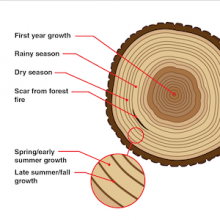Early Modern (1450 CE - 1800 CE)

Louvre Museum Official Website
The site promotes careful attention to the many angles of understanding for each piece: its material qualities, the artist’s background and motivation, larger artistic trends of the period, and the local and global historical context.
Digital Collections - Penn Museum
The digital collections of the Penn Museum are extensive and easily accessible through their online portal. Its written, visual, and audio sources invite many groups to explore world history by browsing its pieces.Age of Revolutions
Two features are particularly valuable for students and teachers: the thematic bibliography section and the ‘Teaching Revolutions’ section.
Primer: Environmental History
Environmental history lends itself particularly well to a world history framework. Environmental processes do not limit themselves to national or cultural borders. The climate, for example, has always been a global system.
The Constitution of the Iroquois Nations
This text is the first seven of 117 clauses of the Constitution of the Iroquois Nation.
Pedro de Cieza de Léon: Chronicles of the Incas, 1540
This text is an excerpt from Spanish conquistador Pedro de Cieza de Léon's writings on the Inca and Peru. He served as a solider during campaigns in present-day Colombia and Peru. He participated in the reconquest of Peru from Spanish rebel forces.

Mesoamerican Pictogram
Between 1541 and 1542 Antonio de Mendoza, viceroy of New Spain, commissioned a Mesoamerican Codex containing text and Aztec pictograms. This image is one example.

Hernán Cortés: Second Letter to Emperor Charles V, 1520
This text is an excerpt of a letter sent from Spanish conquistador Hernán Cortés to the Spanish King, Charles V, in 1520.

Crash Course World History
Crash Course World History is a perfect supplementary video overview for AP students, but it is too fast and jumpy to be the main source of learning for a class.